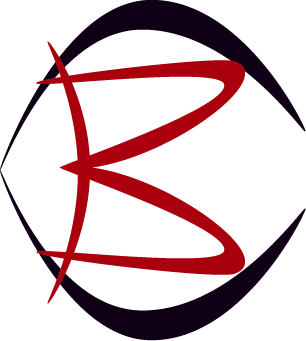Hi Rob.
I wouldn’t worry too much about the difference, but in a nutshell, hypertrophy is where you keep the same number of muscle fibres, but they get bigger, and hyperplasia, is where you actually make more of those same fibres.
Or so they say!
I say that, because there’s something fishy about the whole debate, and then again how it relates to us humans, since the vast majority of the research was done on cats, rats and chickens!
Many scientists believe your born with all the muscle fibres you’re ever going to get, and that that’s genetically determined at 24 weeks, inside your mum.
So best you make them fibres as big as you can through bodybuilding, they say.
You’ll still get stronger as well since the larger fibres will be able to exert more contractile force.
Other experts say you can make new muscle cells that grow into muscle fibres (hyperplasia), and of course, once you have them, you can set about making them bigger too.
The science is a bit of a minefield, to be honest, and rather than go down that route to answer your question, I’d rather keep things straightforward, and with a slice of practical Blunt Coaching thrown in.
The idea that powerlifters are super strong from hyperplasia, and bodybuilders are super big from hypertrophy, has never made much sense to me, since the idea that bodybuilders are just hyper inflated weaklings, is clearly bullshit.
Sure, you will find some beginner/intermediate bodybuilders who aren’t as strong as you might expect, but all the seriously big guys, are also seriously fucking strong.
And all the best powerlifters are seriously fucking big, aren’t they?
It also makes sense to me, that if you were entering a competition where you’d be judged on a ‘one rep max’, then you’d tend to train in the lower rep range, maybe 3 to 6 reps, only because If you went for 1 or 2 rep maxes’ every set, every workout, year-round, then I think you’d bust something up pretty bad.
So, strength/power athletes train with their Olympic or power lifts in mind, which makes sense, whereas bodybuilders are all about size, shape, symmetry, and showing the physique for judging purposes, which involves also stripping the fat away.
Olympic and powerlifters who have to make weight categories, also won’t have an ounce of fat on them, yet remain both amazingly strong, and big for their weight.
As soon as you get above any weight categories, there all as fat as fuck, as many of them swear by the extra energy, water retention, and blubber, as even helping them improve their leverage would you believe.
I suppose, if I was pulling a truck, I’d rather be a 25-stone fatty with 20 st of muscle underneath, than just the 20 stone of solid muscle, if that makes any sense.
I can also guess that the fat dude will have less distance to lower the weight on a bench press, than his ripped twin brother, who’s minus the 2 inches of chest fat.
When benching 800lbs or more, I’ll bet saving that 2 inches (down and up) comes in pretty handy.
To make matters more confusing, many boffins (especially in Russia) reckon there are two different kinds of Hypertrophy!
But it’s interesting to know a bit more about this, since it may be useful to you.
First, we have Myofibrilla hypertrophy.
This is where the actual fibres grow in size, and as mentioned, can apply more force as a side effect.
So powerlifting for 1 to 6 reps, with 3 minutes rest between sets, and a low overall workout volume will target this type of growth.
Second is Sarcoplasmic hypertrophy, which is the growth of plasma, organelles, and non-contractile proteins, which basically means fibres ‘not used for strength’, but for storage.
Because bodybuilders use moderate weights for 8 to 15 reps (which is why they have to use lighter weights), and they have very short rest periods 0-2 minutes, plus do a massive total workout volume, they create an increased need for glycogen and ATP.
In other words, because their muscles have less need for the all-out strength of a powerlifter, and instead need to last longer, the muscles grow huge, though not totally in a functional way, but stuffed full of potential energy.
This could explain how a powerlifter would be way stronger than a bodybuilder of the exact same muscle size, especially if the powerlifter were increasing his fibres in number, as well as their ‘functional size’ at the same time.
When I was younger, and trying to pack on size, it gave me hope that there was more to my potential than just my genes. I really needed to believe that, or else I’d have quit. I was so skinny like my mum, and my dad was pretty average too.
Why do I mention this?
Well, as you know I’m well known as a sales trainer, and that causes me to look at things from a unique angle that most researchers miss.
That angle being, ‘who stands to profit from this research, or me believing a certain way, and could all this be sales and marketing bullshit?’
The thinking that we’re destined to have a low or high number of muscle fibres at birth, and therefore a ‘ceiling’ on our results, was a closely guarded secret in the bodybuilding world, for two good economic reasons.
Firstly, as stated, if someone had shared that news with me aged 21, I would have quit weight training there and then. Why?
Because between 18 and 21, I went from 135 to 140lbs bodyweight, even after training like a lunatic, and eating like a horse.
So, 3 years for a meagre 5lb of muscle gain!
From 16 to 18 I’d gone from 117 to 135lbs, although you could argue I was still growing anyhow, nevertheless, that 18lbs, added to the 5lbs above, meant I’d averaged at just over 4lbs per year, which is nothing to shout about.
Luckily, I was well pleased with that total of 23lbs, since I’d gone from looking like a concentration camp victim to Bruce Lee proportions, and had learnt to fight likewise.
I could have easily given up on the idea of fighting bad genes, and the old saying ‘you can’t turn a greyhound into a bulldog’ would have been my get out clause.
Secondly, if I had of quit, then I assure you the CEO’s of various supplement and weight gain products would have cried themselves to sleep.
Why? because I was one of their best customers, and along with every other ‘runt’ in training back then, I was spending fully half my wages on literally everything the health store had to offer, and it wasn’t cheap back then for lack of competition.
Publishers of monthly bodybuilding mags would also have suffered, as would Arnold Schwarzenegger, as I owned every book both he and his peers ever wrote on the subject of physique building.
I also wouldn’t have purchased various barbell, dumbbell, and chinning bar sets for home use, and not have needed a membership for a local gym for the weights and machines I couldn’t afford.
Now, just imagine little old skinny me aged 16, to 21, spending half my wages each week on industry-driven products and services, then times that by 10 million other kids worldwide, not to mention how many other skinny’s in their late 20’s and 30’s, and how much money would the fitness and supplement industry be down by now, if I’d quit along with them, on bad genetic grounds?
Do you get it?
Ok, and guess what, every single product I ever swallowed, or magazine I read, was all about ‘HYERTROPHY’.
There still isn’t to this day I believe, a single product out there for ‘hyperplasia’, which is my salesman’s guess for why it never gained much ground as a theory.
In other words, if you could increase the number of fibres and get stronger, there’d be no money in it for the industry, so they sold us all on hyperplasia as being the dogs bollocks, and I was given the distinct information that power or Olympic lifting wasn’t for me, because it’d only make me stronger, not bigger.
Which is, as we now know, bollocks.
You can’t keep getting stronger and stronger, without getting bigger and bigger (providing you’re eating enough).
So, I’m actually glad the industry is/was full of overcomplicated, bullshit information and marketing hype, because otherwise, I’d never have put on a total of 54lbs of muscle, between age 16 and 35.
Here are the takeaways for you;
Both size and strength will develop as you go up in weights. Strength will improve first as your body adapts to what it has already.
As you train to grow stronger, you will eventually get bigger, lose fat, and start to show your muscle.
Use whatever program allows you to improve best because, in my professional opinion, this whole debate is industry driven bollocks, that won’t make a blind bit of difference, to all but the most elite athletes on the planet.
Go and visit an Olympic lifting gym, a powerlifting club, and then a hard-core bodybuilding gym, to see which you like best.
Avoid anything where the trendy boys hang out!
You certainly won’t find any pricks in a power or Olympic lifting club, but the faggots that populate the commercial gyms are epidemic. You won’t find a proper coach there either, guaranteed.
If the place is surrounded by mirrors and Wi-Fi, TV screens everywhere has a juice bar and has more than 20% females, then 90% of the people aren’t there for serious training. Sorry, that’s just the way it is.
So, you may have to travel some distance to find a decent club.
The point is, that if you follow the advice of any decent Olympic, Powerlifting or Bodybuilding coach, train, rest, eat, and supplement as they advise, then years from now you’ll look pretty much the same whichever coach you choose, which will be fantastic looking!
If anything, the Olympic lifters look the best, with the weight controlled power athletes next, but if it turns out you want the bodybuilder symmetry, go for it, just be prepared to travel to find an independently owned, ‘spit and sawdust’, hardcore gym, and prepare to learn to like heavy metal music.
From a functional standpoint, if you’re a sportsman of any kind who’s just looking to improve your physique to boot, then it’d have to be Olympic lifting.
This type of skill, strength/power will translate into any sport, since sport involves and requires, multiple (compound) muscles and joints to be used at the same time.
Bodybuilding, using isolated exercises for quads, hams, calves, hypers, abs, bi’s tri’s etc., often trained separately, make no sense, can cause muscular imbalances, and force you to move in a way that’s alien for our real lives, and especially your sport.
You’ll have more injuries from your sport if you go down the bodybuilding route is what I’m saying, because of the mind-body disconnect that the training necessarily entails.
Powerlifting is of course, pretty damn good for protecting you, and even improving your sport, but Olympic lifting is where it’s at in the weights game, since it also involves overhead movement, that powerlifting doesn’t.
They are simply awesome athletes.
If you are over 40, then go to powerlifting, because anything ‘overhead’ isn’t the smartest thing for your shoulders and back, not as you go into your middle years playing a sport.
To best advise you, I’d need to know your age, (sport if any), a better idea of your goals, and your current body composition and available free time for training.
But hopefully the above has answered your basic questions and given you a better idea of what’s what, and where to look next.
Best wishes,
Blunt Coach Andy


